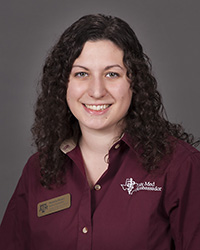Tracking Food Animal
 Now that Christmas break has come and gone and we are now back at school this week for spring semester, I am finally in the homestretch of my path of becoming a veterinarian. After my spring semester finals, I will be going straight into my clinical year this May. During our clinical year, each student takes a core set of rotations in both the small and large animal hospitals, since as veterinarians we are licensed to work on all species.
Now that Christmas break has come and gone and we are now back at school this week for spring semester, I am finally in the homestretch of my path of becoming a veterinarian. After my spring semester finals, I will be going straight into my clinical year this May. During our clinical year, each student takes a core set of rotations in both the small and large animal hospitals, since as veterinarians we are licensed to work on all species.
But for the remaining rotations, we get to pick a track that most closely follows what we are interested in doing once we graduate. I want to work primarily with dairy cattle, so before break I chose the food animal track. I will spend several rotations in the Food Animal Department, where they treat food and fiber animals such as cattle, sheep, goats, llamas, alpacas, pigs, and even the occasional camel. I then have the opportunity to conduct externships that will give me more experience in my chosen field.
Because I am hoping to get a job as a dairy veterinarian when I graduate, last summer I spent time in the Texas Panhandle working with dairy veterinarians. There, I worked to develop skills in areas such as diagnosing a cow as pregnant, hoof care, drawing blood for testing, and surgical techniques. I also participated in an externship back near my home in Pennsylvania, where I got more dairy and small ruminant experience.
My externships this next year will be across the country so that I hopefully will gain a better idea of how dairy medicine is done throughout the United States. I will be going to California, Oregon, Minnesota, Pennsylvania, and the Panhandle again to get more experience under different veterinarians. I’m looking forward to what the next year and a half will hold for me. It’s hard to believe how soon I will be making medical decisions and helping patients, and I can’t wait to see what I will learn!
